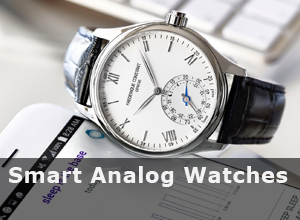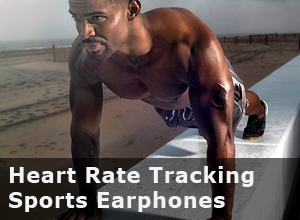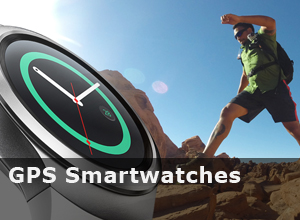The Garmin Vivosmart HR is the second fitness tracker from the GPS mammoths to feature an optical heart rate monitor, the first was the FR225 which used HRM technology from Mio whereas the Vivosmart HR uses Garmin’s in-house Elevate HRM.
Since it was first released in November 2015 it’s been pretty clear that the Vivosmart HR would be on the heels of the Fitbit Charge HR, trying to knock it off top spot for the most popular fitness tracker.
Without further rambling..
Garmin Vivosmart HR Review
In the Box

The Garmin Vivosmart HR comes with a USB charger. It’s not my favorite charger in the world as it’s a bit awkward to get on and off.. Still, it looks good. The fitness tracker is an all-in-one unit so it doesn’t come with any replacement bands.
Looks
It’s always worth beginning a wearable review with how it looks – after all you do wear it. The Garmin Vivosmart HR looks okay, but that’s about it. Garmin aren’t a fashion brand, if you buy a Garmin device you know you’re getting a gadget and they don’t try to disguise it. If the Vivosmart didn’t protrude from the wrist so much it would look better.
Comfort
Although it does stick out a bit, and the optical HRM on the bottom isn’t flush, the Vivosmart HR is comfortable to wear. It has a soft rubber band that feels good and the curved design adds to the comfort level.
Design
As you’d expect from the biggest company in the game, The VivoSmart HR has a decent build quality and feels solid enough to survive if it accidentally met the concrete. It does come in a range of colors, but it’s an all-in-one unit so the strap cannot be changed. There’s not much chance of the band falling off your wrist as it uses a watch-style stainless steel buckle.

Display
The fitness tracker has a monochrome 1 inch 160 x 168 LCD touchscreen, and like all the Garmin wearables I’ve tried it looks great outdoors in bright conditions. You can swipe in four directions and the touchscreen has no noticeable lag. The display is always-on; when you touch it the backlight comes on and then times out after 5 seconds. The backlight can also be activated with a twist of the wrist (gesture recognition) which is handy for glancing the time. If for some reason you prefer no backlight at all, it can be turned off.
Unlike some previous Garmins, you can adjust the brightness of the backlight. By default, the time, date and Move Bar are displayed. The Vivosmart HR doesn’t work with the Connect IQ platform, so you can’t download any fancy clock faces.
The screen orientation can be set to horizontal or vertical. If you change the orientation it seems to take a few minutes before it kicks in after a fresh sync. Not all of the screens work in vertical mode, such as notifications – which wouldn’t look great.
Fitness
The Vivosmart HR tracks your steps taken, distance covered, calories burned, floors climbed, activity intensity, active minutes and continuous heart rate. The Garmin Connect app allows you to see stats on individual days as well as the last 7 days, 30 days and 12 months. Active minutes can be separated into moderate intensity and vigorous intensity; and of course there’s the good old-fashioned and slightly patronizing Move Alert and Move Bar to encourage you to get off your hind.
![]()
It allows you to tag different activities. The default activities are Run and Cardio. There’s also an option called “Other” and you can create custom activities in the app. In the activity mode, a stopwatch/timer is displayed and you can scroll through your other stats. Activity mode displays your active calories burned which means you know how many calories your run, walk, etc, is burning instead of just adding the amount to your Baseline calories.
When you review your Activity mode stats in the app, there are plenty of metrics to keep your brain busy, including: pace (minutes per mile); average moving pace; best pace, average speed (MPH/KPH); average moving speed, maximum speed; average heart rate; maximum heart Rate, distance travelled and combined activity distance. There’s also a “Time in Zones” reading in the app, and an option to customize Zones (HRM), but I haven’t had much luck getting it work with the mobile app. However, accessing the Garmin Connect dashboard via desktop makes it easy to get data about zones and % of maximum.

Steps Accuracy
I found the steps and distance count to very decent in terms of accuracy. My normal walking/running route is 2.1 miles according to GPS, the Garmin Vivosmart HR logged the walk at 2.15 miles so it was out by 0.05 – pretty flippin good.

I was also counting my steps by the hundred and found the Vivosmart HR to be 98% – 99% accurate, counting either 99 or or 101 to my hundred. It wouldn’t have been quite so accurate if I was running.


Calories
The Garmin Vivosmart HR calculates Baseline calories (BMR) which is the amount you burn just by being alive. It also shows a separate reading of how many calories you burn during your activities. The app allows you to enter your weight and calculates your BMI and weight loss if you enter a new weight. If you want to log your food and calorie intake you’ll need to connect the Garmin app to MyFitnessPal because the Garmin app (still) doesn’t do it alone.
Sleep
The Vivosmart HR automatically detects when you fall asleep and wake up, and seems pretty spot on at getting the times right. The auto sleep detection works better than previous Garmins I have tried, such as the Vivoactive and Vivofit. It’s a good thing the auto sleep does work well as there is no way to enter sleep mode manually.
Previously, I haven’t been overly impressed with the Garmin Connect sleep reports. However the app has been revamped with new, more interesting sleep graphs which display: times of sleeping and waking, total hours, periods of light and deep sleep, times you were awake, and sleep history. I can’t point out any faults when looking at my sleep graphs. The Vivosmart HR is definitely the best sleep monitor from Garmin that I’ve tried.
![]()
One thing that could be better is if your heart rate was tracked during sleeping and displayed in the graphs, which it isn’t, not mine anyway. There are better sleep monitors that do track your HR during the night. The Vivosmart HR also has a Do Not Disturb Mode that can be turned on from the band, and a silent alarm that will vibrate you out of your sack in the morning , although the alarm needs to set from within the app.
Notifications
When your smartphone receives an incoming notification, the Vivosmart HR will give you a short sharp buzz. Your three latest notifications are displayed on the first screen, then you can tap the display to scroll through, read or dismiss them. It displays incoming caller ID, missed calls, text messages, emails, calendar reminders and social media alerts. You can select which social apps you want to hear from in the Vivosmart HR settings within the app, such as Google Plus, Line, Twitter, Facebook, etc.


At first it was a bit confusing navigating the notifications, and it can be bit annoying having to read them sideways.
Heart Rate Monitor
The HRM is pretty decent. The band displays a continuous BPM reading and an average resting reading. If you tap the HRM screen, a second screen will appear with a little graph that displays your last 4 hours of heart rate activity and a High and Low score below the graph. There are also heart rate graphs in the app.

If you want the most accurate heart rate monitor, then go for a chest strap. If you’re looking to pair the Vivosmart HR with an ANT+ chest strap or any ANT+ device, you’re out of luck because it doesn’t do it, even though the original Vivosmart does pair with ANT+ devices.
The accuracy of the Vivosmart HR optical HRM is pretty decent. For resting heart rate it seems stable, and probably more so than others, such as the Basis Peak and Fitbit Charge HR, but it’s better for resting HR than it is for higher intensities – something that all optical HRMs seem to have in common . One thing I noticed is that when I needed to leap over puddles during my run, my HR would jump up about 15 BPM – pretty normal, but then it wouldn’t come back down until I stopped – which on that occasion was when a freakin sharp stone penetrated the bottom of my trainer and relegated me to hobbling.
I’m not a hardcore runner by any means, but our resident nutter who trains for half marathons reckons for high intensities, the Garmin FR225 is about the most accurate wrist-based HRM he’s tried.
Other Features
You can set the Vivosmart HR to provide weather reports, use it as a VIRB remote for compatible devices and control the music on your smartphone. The music control works well and you can set your default player, including: radio, video player, voice recorder Newsstand etc. If you’re prone to misplacing your smartphone (like me) you’ll find the Vivosmart’s Phone Finder feature useful.

Customization
Garmin wearables are generally more customizeable than their competitors. The Vivosmart HR allows you to turn off the HRM; activity tracking; VIRB, music control; backlight; move alert; and you can use Snapshots to select/display your most relevant data.
App
The Garmin Connect app takes a bit of getting used to as there are so many features and it can be used to manage different Garmin products. Garmin Connect can sync data from third-party fitness apps, including: MyFitnessPal, MapMyFitness, Endomondo and Strava which can be accessed from the 3rd Party Apps dashboard. Garmin Connect is also a social platform where you can connect to other users and rank on the Leaderboard.

The Vivosmart HR syncs automatically to the app, and there’s also an option to sync manually. I haven’t had any problems syncing, if you do have problems, turning your smartphone’s Bluetooth off and on again often sorts it out.
Compatibility
The Garmin Connect mobile app is compatible with Android 4.3 + / iOS iPhone 4S + / Windows 10 +. You can also access your Garmin Connect dashboard on your desktop/laptop.
Battery Life
The Vivosmart HR battery lasts for around 5 days between charges. It’s charged via USB and takes about an hour to charge.
Water-Resistant
It has a 5 ATM water-resistance rating and can be used for swimming. However, there is no dedicated swim mode, but it will track your movements in the pool and class them as steps. Calories burned will also be logged but not so accurately because the Vivosmart HR doesn’t actually know you’re swimming. The HRM also works in the pool but not with great accuracy.
Basically there’s not much point in using the Vivosmart HR for swimming.. If you’re looking for the best fitness trackers designed for swimming check out This Guide.
Verdict
So far, the most popular fitness tracker with a built-in HRM is the Fitbit Charge HR. However, the Vivosmart HR has a lot more features. It’s more customizable and the HRM is probably more a bit more accurate for tracking your resting heart rate. After spending a few weeks with both wearables, I think the Vivosmart HR is worthy of taking the top spot away from the Fitbit..
Price
Around $149.99.
• Garmin Vivosmart HR
Like This Article? Why Not Try…
New Garmin Fenix 3 HR – How Many Features do You Want?
Best Fitness Trackers 2016 With a Built-in HRM
































Hi ive just purchased the Garmin vivosmart HR, could you please send me exactly a picture of each icon and what its discription-meanings are please, thankyou